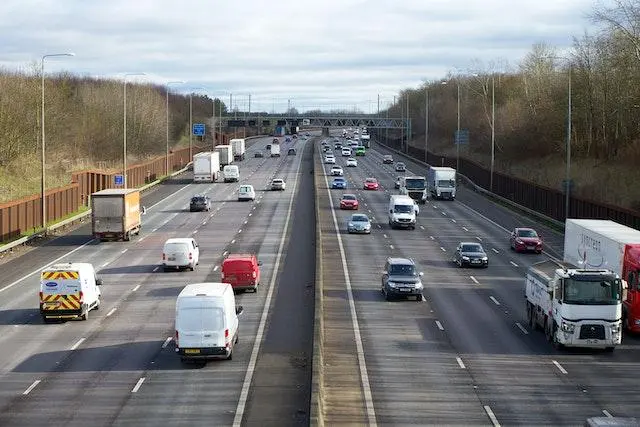Why UK Drivers Drive on the Left: Explained
Published Date: 21st Mar 2023
As a UK car buyer or road user, you may have wondered why the UK drives on the left-hand side of the road. Understanding the history and reasoning behind this convention is important for ensuring road safety and making informed decisions when purchasing a car. This article will provide an overview of the history and evolution of left-hand driving in the UK and a comparison to right-hand driving used in other countries. Whether you are a customer of UK car discount or a general road user, this article will provide valuable insights into one of the unique conventions of driving in the UK.
Historical background of left-hand driving in the UK
 The practice of driving on the left-hand side of the road in the UK has its roots in early history. In the past, most people travelled on horseback, and it was more convenient for them to mount and dismount their horses from the left-hand side of the road. This meant that they would naturally travel on the left-hand side of the road to avoid collisions with other horse riders.
The practice of driving on the left-hand side of the road in the UK has its roots in early history. In the past, most people travelled on horseback, and it was more convenient for them to mount and dismount their horses from the left-hand side of the road. This meant that they would naturally travel on the left-hand side of the road to avoid collisions with other horse riders.
As horse-drawn carriages and carts became the primary mode of transportation, the practice of driving on the left-hand side of the road continued. This was further reinforced with the introduction of early motor vehicles, which were often designed with the driver sitting on the right-hand side of the vehicle, providing a better view of the road ahead while keeping the driver closer to the centre of the road.
Cultural and historical factors also influenced the adoption of left-hand driving in the UK. For example, the French adopted right-hand driving during the Napoleonic era, and this influenced many other countries, such as the United States, to follow suit. However, the UK resisted this change and continued to drive on the left-hand side of the road.
Despite some attempts to switch to right-hand driving in the UK, left-hand driving has remained the convention to this day. As we will see in the next chapter, left-hand driving has significantly impacted road safety and driving behaviour in the UK.
Left-hand driving in the UK today
Left-hand driving remains the standard in the UK, significantly impacting road safety and driving behaviour. One of the benefits of left-hand driving is that it keeps the driver's dominant hand on the steering wheel. In the UK, this means that the driver's right hand is always on the wheel, allowing for better control of the vehicle.
Another benefit of left-hand driving is that it provides a clear view of the road ahead. Since the driver sits on the vehicle's right-hand side, they have a better view of oncoming traffic and can easily see around curves and bends in the road.
However, left-hand driving can also present some challenges for drivers. For example, turning left at an intersection requires crossing over oncoming traffic, which can be dangerous if not done carefully. Additionally, left-hand driving can make it difficult for drivers to navigate roundabouts, requiring them to enter and exit from the left side.
Despite these challenges, left-hand driving has become an integral part of driving culture in the UK. It is worth noting, however, that many countries around the world drive on the right-hand side of the road, including the United States, Canada, and most of Europe. This can make driving in these countries difficult for UK drivers, who may not be used to driving on the right-hand side of the road.
In conclusion, left-hand driving is a unique convention of driving in the UK, and it significantly impacts road safety and driving behaviour. While it may present some challenges for drivers, it remains an important part of driving culture in the UK. As a UK car buyer or road user, it is important to understand the history and reasoning behind left-hand driving to ensure safe and informed driving practices.
Differences between left-hand and right-hand driving
 While left-hand driving is the norm in the UK, it is important to understand the differences between left-hand and right-hand driving. As mentioned earlier, the majority of countries around the world drive on the right-hand side of the road. This can present challenges for UK drivers who are used to left-hand driving when travelling abroad.
While left-hand driving is the norm in the UK, it is important to understand the differences between left-hand and right-hand driving. As mentioned earlier, the majority of countries around the world drive on the right-hand side of the road. This can present challenges for UK drivers who are used to left-hand driving when travelling abroad.
One of the primary differences between left-hand and right-hand driving is the position of the driver in the vehicle. In left-hand driving countries, the driver sits on the right-hand side of the vehicle, while in right-hand driving countries, the driver sits on the left-hand side of the vehicle. This can make it difficult for drivers to adjust to the different positioning of the pedals, gear stick, and other controls in the vehicle.
Another difference is the direction of traffic flow. In left-hand driving countries, traffic flows in a clockwise direction, while in right-hand driving countries, traffic flows in a counterclockwise direction. This can be particularly challenging when navigating roundabouts, as the direction of traffic flow can be reversed in different countries.
One of the main reasons for adopting right-hand driving was to make it easier for drivers to navigate intersections and junctions. In right-hand driving countries, turning left at an intersection requires crossing over oncoming traffic, which can be dangerous. However, turning right at an intersection in right-hand driving countries is typically safer and easier.
While left-hand driving is the norm in the UK, it is important to understand the differences between left-hand and right-hand driving when travelling abroad. These differences can present challenges for drivers, particularly when navigating roundabouts and intersections. As always, practising safe and cautious driving habits is important, regardless of which side of the road you are driving on.
In summary, understanding the history and reasoning behind left-hand driving in the UK is important for new car buyers and car drivers in the country. While left-hand driving is the norm in the UK, it is essential to recognize the differences between left-hand and right-hand driving, particularly when travelling abroad. Regardless of which side of the road you are driving on, it is important to prioritize safe and responsible driving practices to ensure your safety and the safety of others on the road.
Whilst driving on the right in the UK is important, there are many other factors to ensure you are safe on UK roads:
- Always drive on the left-hand side of the road and be aware of your surroundings, especially when navigating intersections and roundabouts.
- Get familiar with the controls in your vehicle before setting off, including the gear stick, pedals, and steering wheel.
- Wear your seatbelt at all times and ensure all passengers in your vehicle do the same.
- Observe speed limits and avoid distractions while driving, such as using your phone or adjusting the radio.
- Check your mirrors regularly and always signal when changing lanes or turning.
- Keep a safe distance from other vehicles on the road, particularly in wet or slippery conditions.
- Be prepared for different weather conditions and adjust your driving accordingly, such as reducing your speed in fog or rain.
- Regularly maintain your vehicle, including checking the oil and tire pressure, to ensure it's always safe and roadworthy.
- More countries drive on the right-hand side of the road than on the left-hand side. Around two-thirds of the countries in the world.
